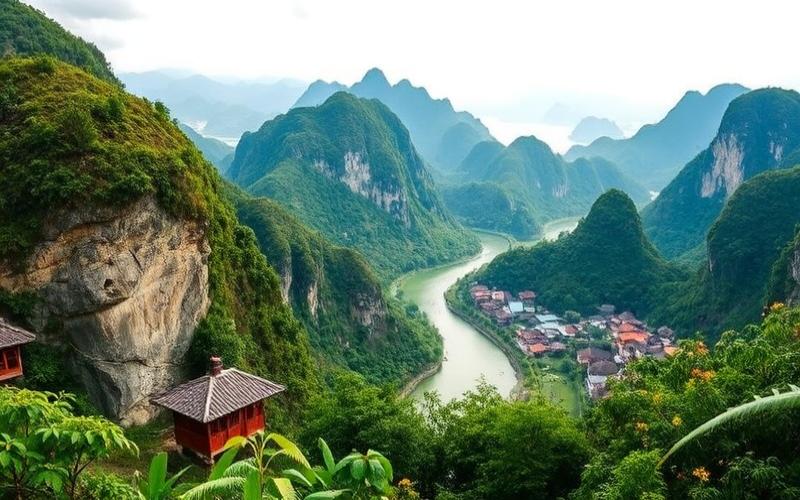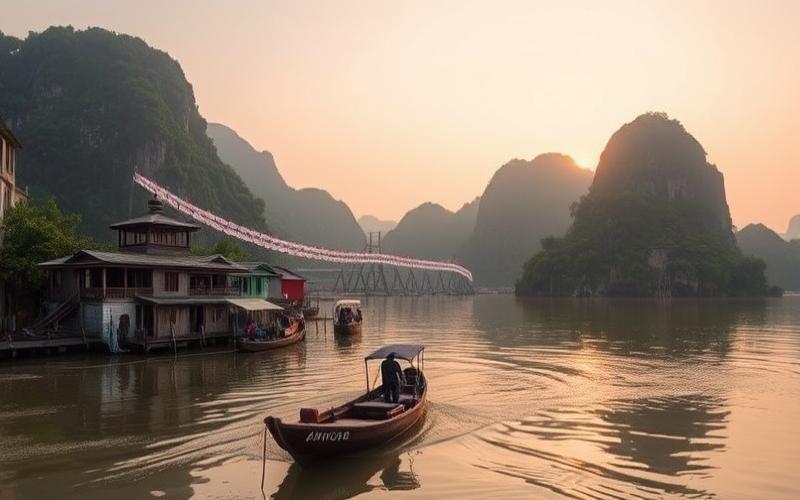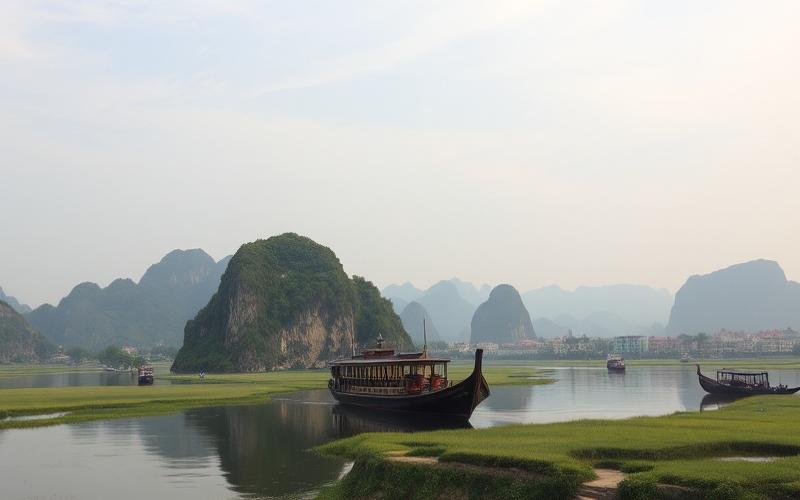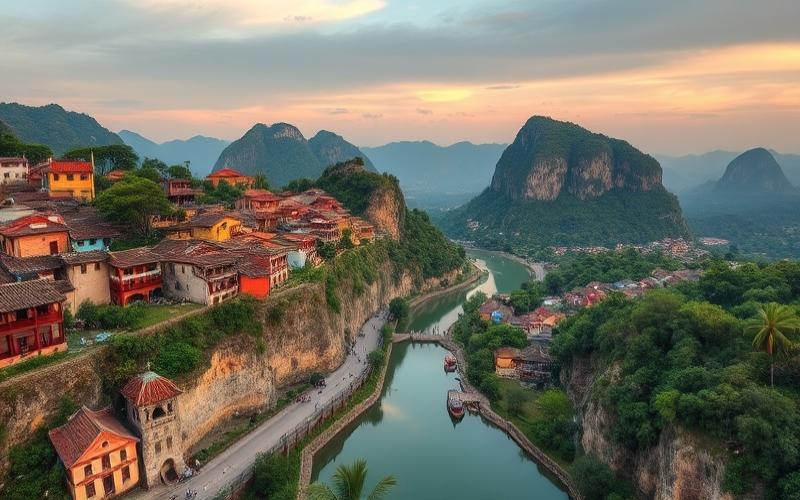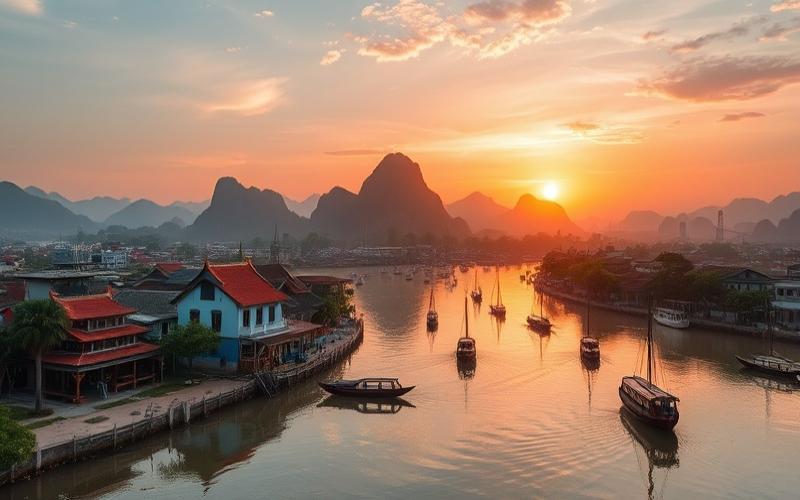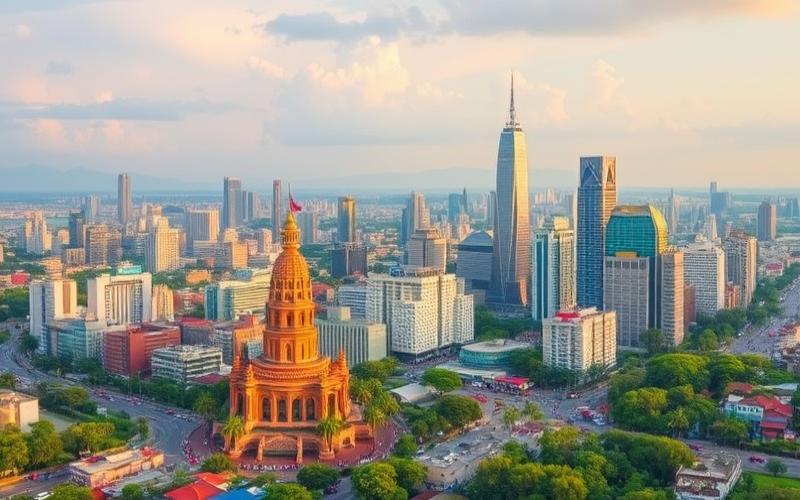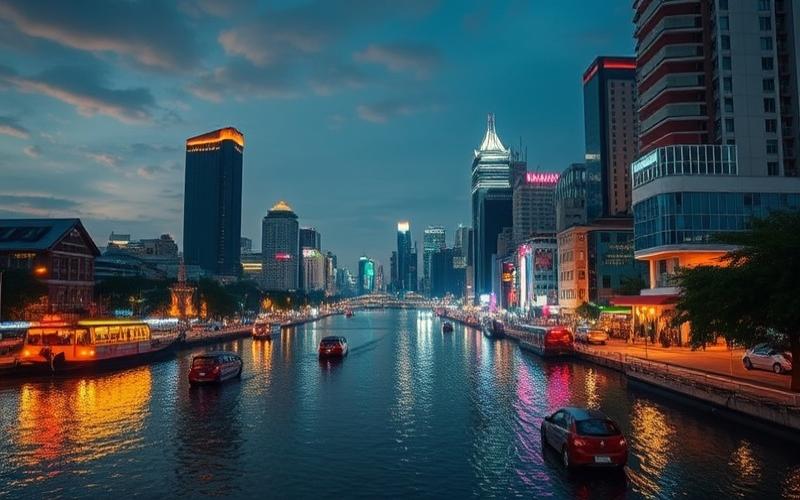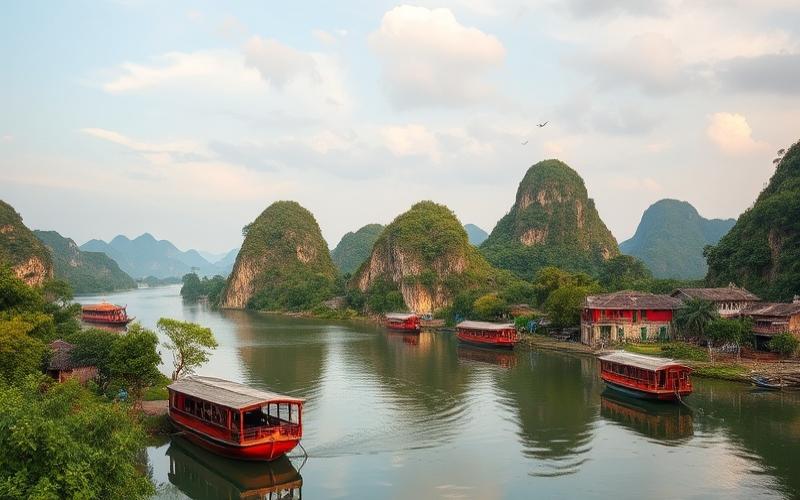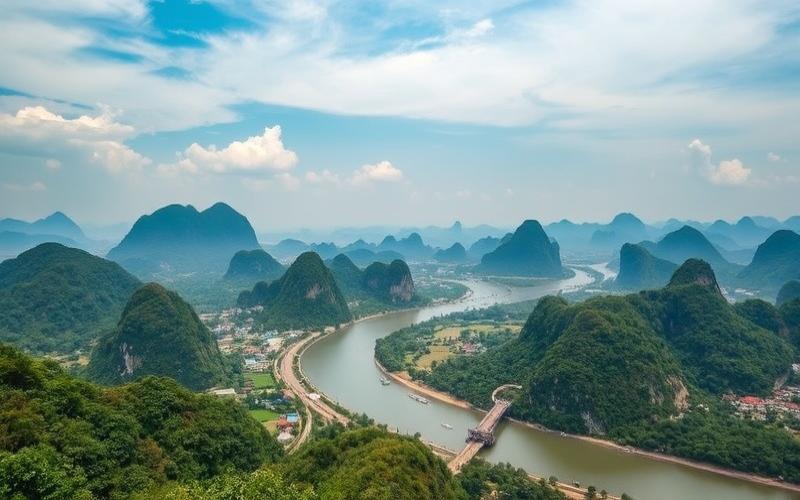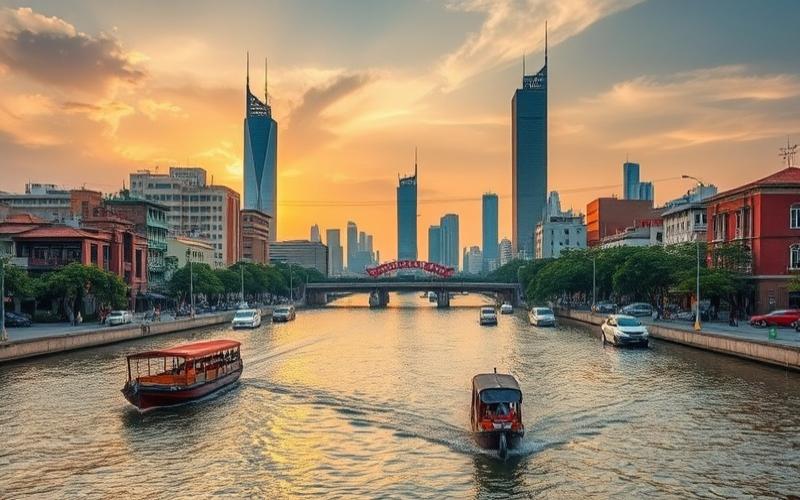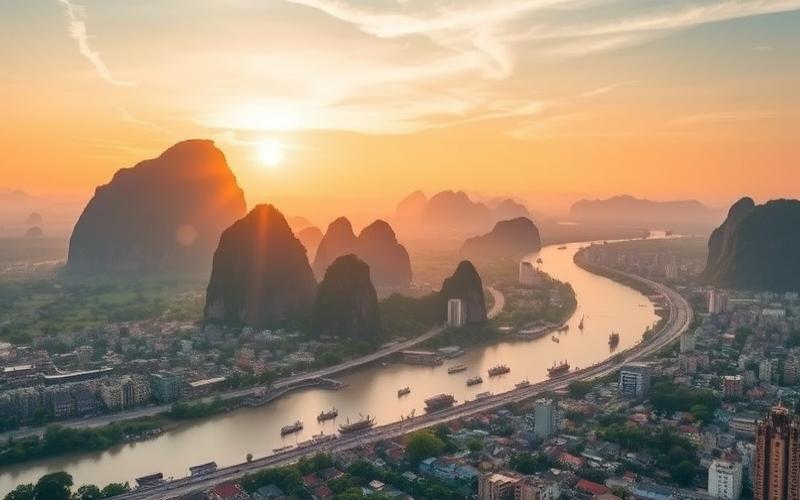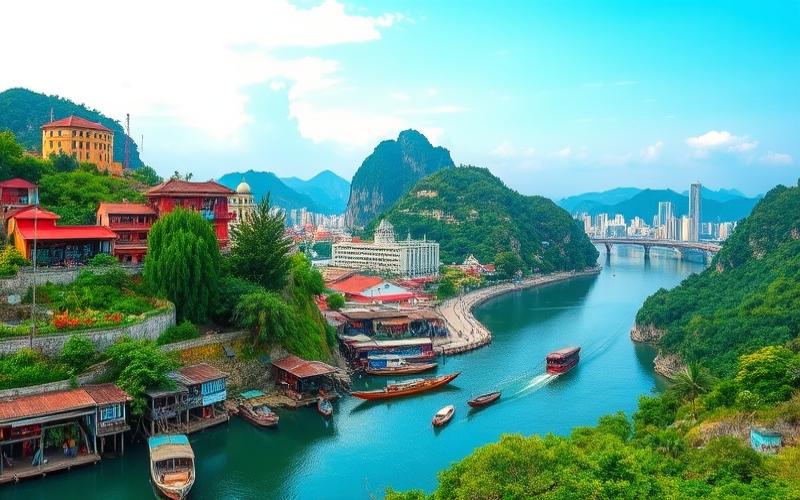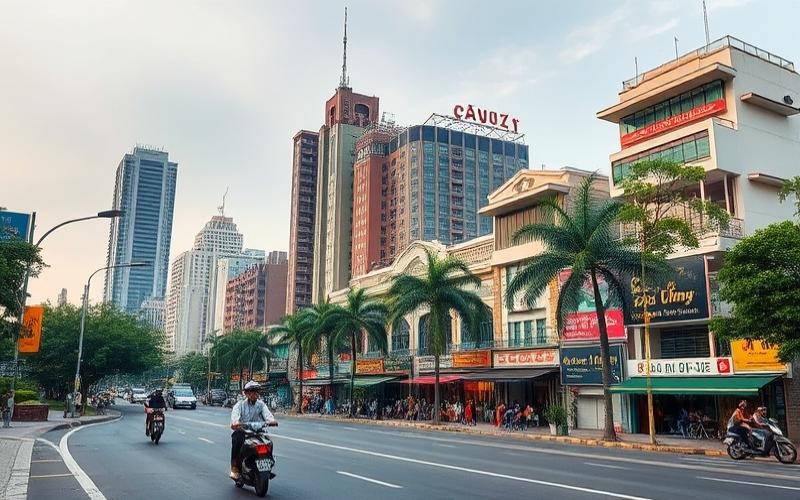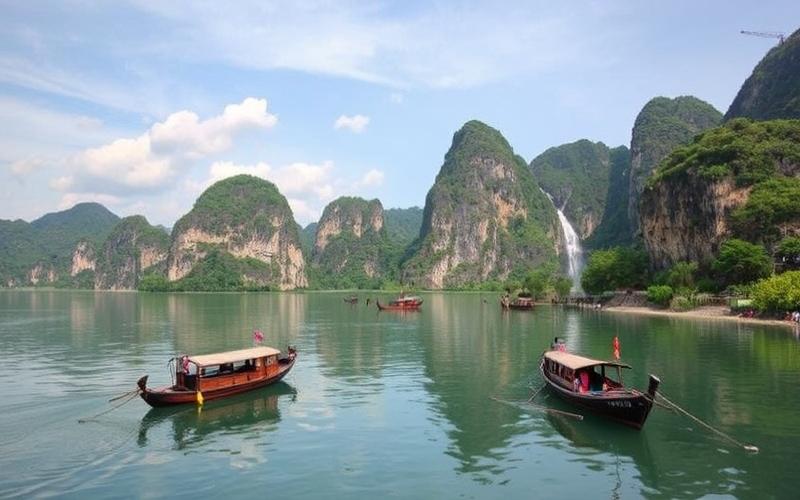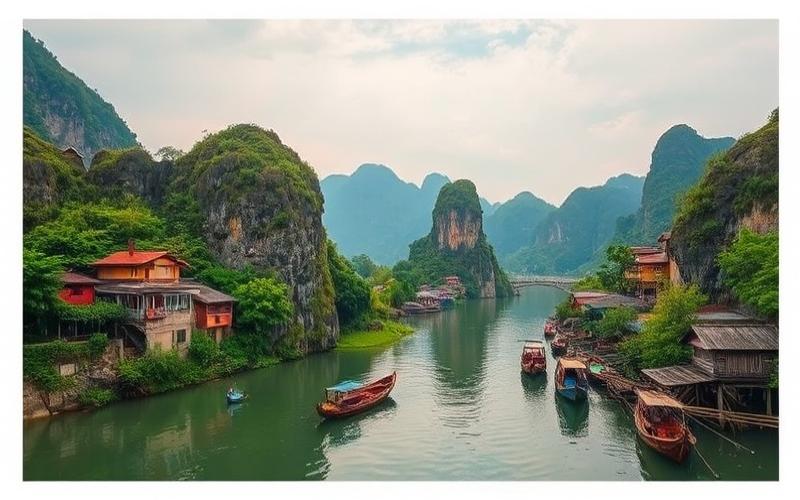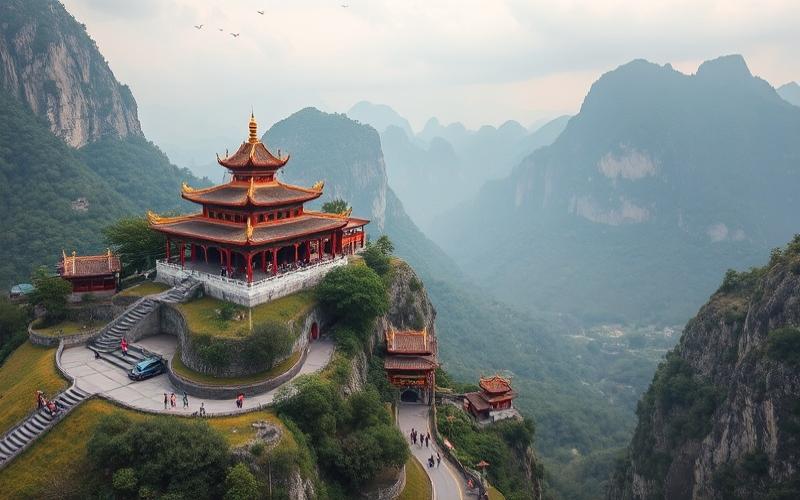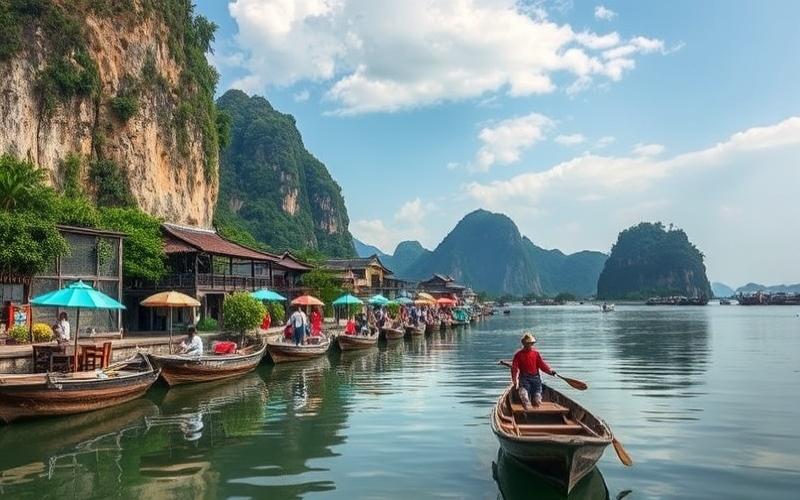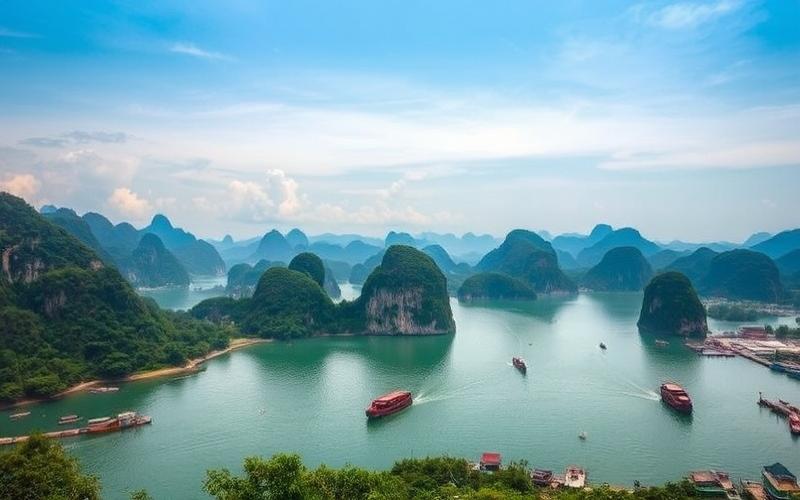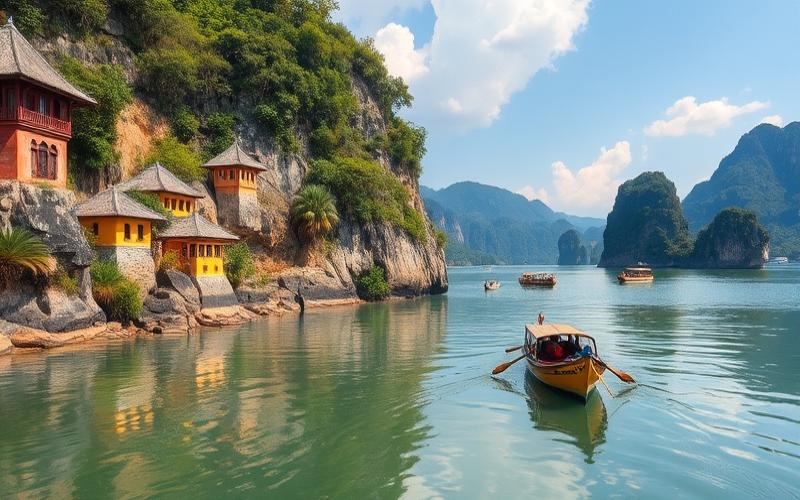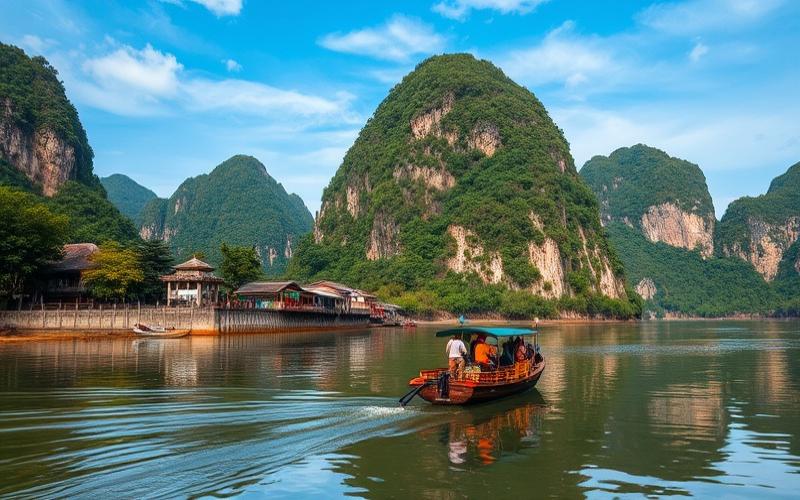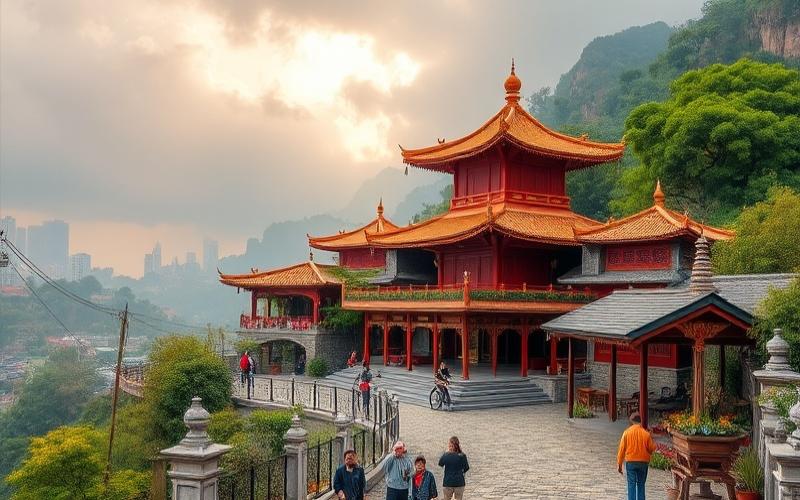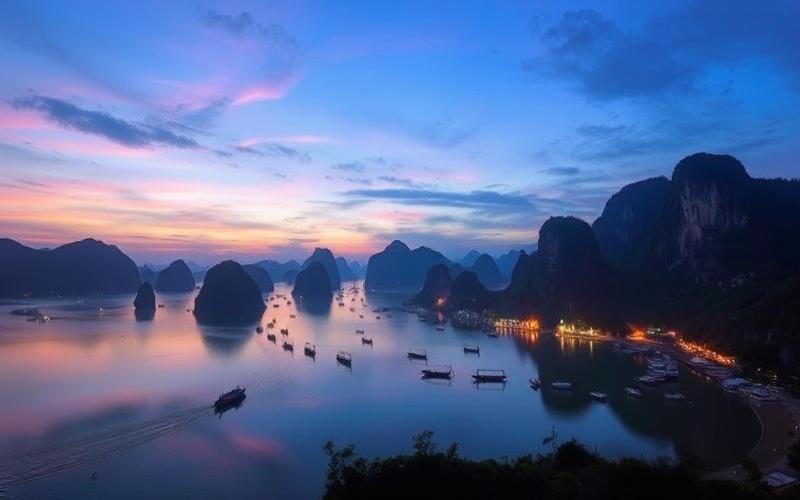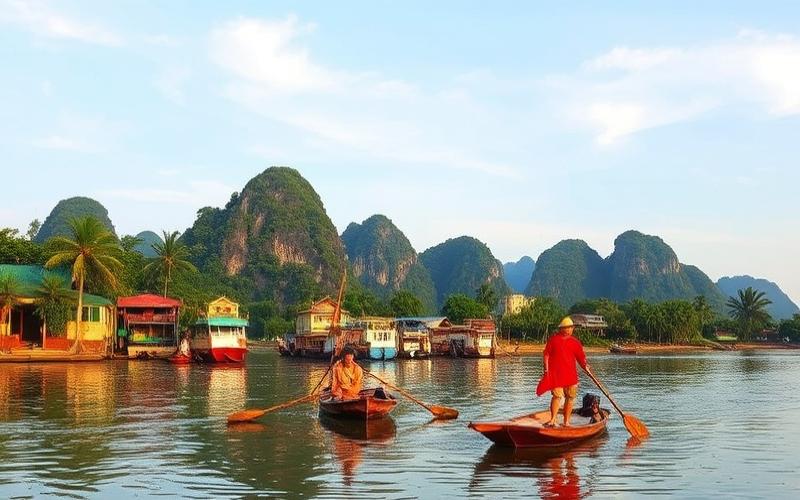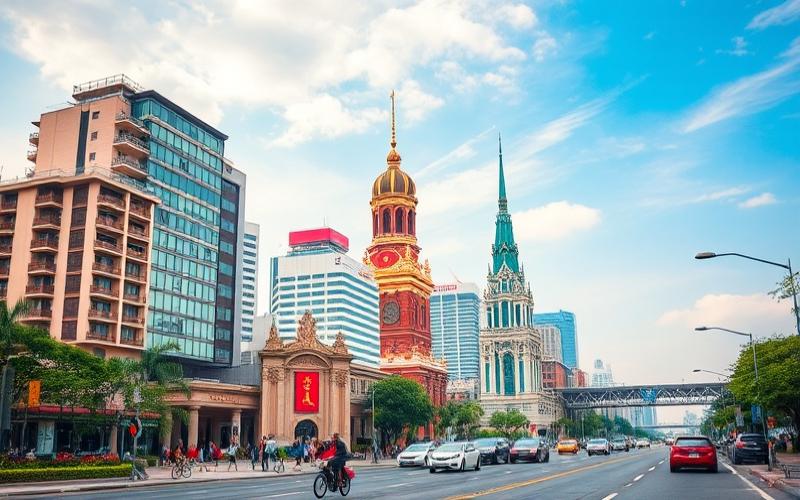
 Published on and written by Cyril Jarnias
Published on and written by Cyril Jarnias
Vietnam is rapidly emerging as one of Southeast Asia’s most attractive destinations for real estate investment, offering a unique combination of sustained economic growth and legislative reforms favorable to foreign investors.
With dynamic cities like Ho Chi Minh City and Hanoi, where demand for housing and commercial spaces continues to grow, the country presents exceptional opportunities for portfolio diversification.
Indeed, rapid urbanization and a young working population contribute to a significant increase in demand for modern infrastructure.
While competitive returns attract investors worldwide, favorable tax policies and relatively low entry prices compared to other Asian markets add further appeal to Vietnam’s real estate sector.
Why Choose Vietnam for Real Estate Investment?
Vietnam strongly attracts real estate investors for several economic and political reasons, centered around the following key areas:
Key Economic Factors:
- Rapid Economic Growth: Vietnam ranks among Asia’s most dynamic economies, maintaining steady GDP progression and stable growth in foreign direct investment (FDI), which reached $25.4 billion in 2024 (+9.4% year-over-year).
- Infrastructure Development: Extensive infrastructure projects (transportation, industrial zones, urban areas) stimulate real estate demand nationwide, accelerating the expansion of urban and industrial hubs.
- Expanding Middle Class: Rising living standards and middle-class growth generate increased demand for urban housing, luxury residences, and consumer goods.
- Attractive Borrowing Costs: Lower interest rates and easier access to credit promote both domestic and foreign investment.
Political and Regulatory Factors:
- Political Stability: A stable political environment, recognized for its predictability and security, reassures international investors.
- Openness to Foreign Capital: The government has gradually relaxed legislation, allowing foreigners to acquire real estate under certain conditions, energizing the market.
- Recent Regulatory Improvements: Ongoing reforms aim to clarify purchasing procedures for non-residents and enhance market transparency.
Growing Housing Demand:
- Rapid Urbanization: High urbanization rates create strong demand for housing, both for rent and purchase, in major cities like Ho Chi Minh City and Hanoi.
- Increasing Urban Population: Migration to urban centers, combined with rising incomes, supports growth in the residential sector.
Legal Frameworks Facilitating Foreign Access:
| Regulatory Evolution | Impact for Foreign Investors |
|---|---|
| Relaxation of Property Laws | Ability for foreigners to buy and own real estate (apartments, houses, commercial projects) under conditions |
| Simplified Administrative Procedures | Faster transactions, reduced legal risks |
| Investment Protection Agreements | Enhanced security for invested capital |
Comparative Advantages Over Other Asian Markets:
- Lower Entry Costs: Real estate prices in Vietnam remain lower than other major regional markets (Singapore, Thailand, Malaysia), offering better potential rental yields and attractive medium-term appreciation.
- High Profit Potential: Rapid market evolution, coupled with sustained demand, anticipates above-average regional growth margins.
- Fewer Regulatory Barriers: Recent simplification of real estate ownership laws for foreigners positions Vietnam as one of Asia’s most open and accessible markets for real estate investment.
Key Takeaways:
- Rapid economic and urban growth
- Political stability and secure environment
- Pro-investor regulatory reforms
- Sustained housing demand driven by urbanization and middle class
- Competitive access costs and strong appreciation potential
Good to Know:
Vietnam stands out as a prime destination for real estate investment thanks to its impressive economic growth and strong political stability that reassure investors. Its gradual opening to foreign investment with legislative reforms has made accessing the real estate market easier, particularly with recent laws allowing foreigners to purchase properties under certain conditions. Rapid urbanization and the rise of the middle class fuel increased housing demand, making the sector attractive. Compared to other Asian markets, Vietnam offers relatively low entry costs and high profit potential, thus attracting investments to dynamic cities like Hanoi and Ho Chi Minh City.
Price Analysis and Housing Types in Vietnam
The Vietnamese real estate market is experiencing a general price increase in 2025, driven by favorable macroeconomic factors, recovering demand, and major infrastructure projects. However, regional and sectoral trends reveal significant contrasts across cities and housing types.
| Region | Average Apartment Prices (USD/m²) | Annual Variation (%) | Main Trends |
| Ho Chi Minh City | ~3,000 | +24 | High-end supply, relative shortage of affordable housing, growth driven by recent infrastructure (e.g., metro). |
| Hanoi | Data not specified (decline) | -16 (buyer interest) | Downward correction after several years of increase; lower attractiveness compared to the South. |
| Coastal/Tourist Areas | Varies by location | Stable to moderate increase | Strong foreign demand, sustained tourism development. |
Main Available Housing Types
- Apartments
Typically located in major cities; strong presence in the high-end segment in Ho Chi Minh City with modern amenities, enhanced security, and integrated services. - Single Houses (“nhà phố”)
Often distributed in traditional urban or suburban neighborhoods. They offer more space but face increasing land restrictions. - Villas
Positioned in the luxury segment; generally located in urban outskirts or gated residential areas. Premium features: private gardens, pools. - Condos
Collective housing often associated with modern real estate programs featuring shared amenities (gyms, green spaces).
Distinctive Characteristics:
- New apartments prioritize verticality and technological integration.
- Villas remain rare in city centers but highly sought for their exclusivity.
- Single houses are prized for their heritage value but see prices rise due to rapid urbanization.
Factors Influencing Prices
List of main factors:
- Local demand supported by rapid urbanization
- Massive infrastructure development (metro lines in Ho Chi Minh City)
- Persistent shortage in certain segments like social housing
- Speculative expectations around urban land
- Stricter regulations reducing speculation
Major projects such as metro systems or new urban planning strongly boost certain neighborhoods with a direct effect on local land values.
Comparison with Other Asian Markets
Summary comparison table:
| City/Region | Average New Residential Price USD/m² |
| Shanghai | ~7,500 |
| Bangkok | ~4,500 |
| Kuala Lumpur | ~2,900 |
| Ho Chi Minh City | ~3,000 |
The Vietnamese market remains generally cheaper than its Chinese or Thai counterparts for new high-end properties but shows much faster growth (+15% to +24%/year depending on segment).
Recent Statistics & Forecasts
- Average expected increase for all of Vietnam: between +6% and +20% depending on region/segment by end of 2025.
Between 2015 and 2023, cumulative apartment price increases around +15–20%. This upward trend should continue provided limited supply faces sustained structural demand.
Forecasts:
Increased supply expected from mid-2025 could temporarily stabilize certain segments while maintaining overall high levels – particularly in the high-end segment where competition intensifies between local and international developers.
Opportunities & Perspectives
Attractiveness remains strong given national economic potential, though now accompanied by increased selectivity based on geographic location, property quality, and future regulatory evolution.
Good to Know:
Currently, the Vietnamese real estate market shows interesting dynamics with prices constantly evolving by region. In Hanoi and Ho Chi Minh City, apartment and condo prices are rising, driven by rapid urbanization and foreign investment. Single houses and villas, particularly in coastal areas, show more pronounced price variations, influenced by infrastructure quality and tourism development projects. Compared to other Asian markets like Bangkok or Kuala Lumpur, prices in Vietnam remain competitive, offering attractive investment potential. Forecasts indicate continued growth, supported by urban development and growing interest from international buyers. Investors should monitor infrastructure plans, such as transportation network expansions, to anticipate high-appreciation areas. The most recent statistics highlight an annual price increase of approximately 10%, reflecting the growing appeal of the Vietnamese market and the need to consider regional factors to optimize investments.
Prime Areas for Real Estate Investment in Vietnam
Leading Cities and Regions for Real Estate Investment in Vietnam
| Region/City | Key Characteristics | Price Trends & Perspectives | Main Growth Drivers |
|---|---|---|---|
| Hanoi | Political capital, dynamic urban hubs, new smart zones. Strong high-end and mid-range residential demand. | Apartment prices: +22.3% year-over-year (Q3 2024), reaching 2,547 USD/m². Apartment sales more than doubled in one year. Very positive outlook. | Major infrastructure projects (metros, ring roads), housing reforms promoting transparency and foreign access, national economic dynamism |
| Ho Chi Minh City | Country’s largest city, major economic center with strong rental demand particularly in expatriate-favored districts (e.g., Thao Dien). Rapid urban development around Thủ Thiêm. | Continuous price increases in central districts; high rental potential; good expected valuation with Metro Line 1. | Major infrastructure projects (metro), intensive urban development, attractiveness to international investors due to improved land regulation |
| Da Nang | Dynamic coastal city focused on tourism & technology; strong hotel and high-end residential development; growing regional industrial hub. | Marked post-pandemic recovery in resort segment; stability or moderate increase expected depending on domestic/international tourism. | Growth in domestic/foreign tourism; investments in hospitality/second homes; major port/airport projects |
| Nha Trang | Renowned beach tourist destination; numerous resorts & residential complexes by the sea; market driven by tourism sector. | Gradual recovery of resort real estate market post-Covid slowdown; upward potential if international tourist influx confirmed. | Continuous development of hotel/tourism sector; local incentives for foreign investment; modernized port/airport infrastructure |
| Phu Quoc | Island undergoing tourist transformation with proliferation of international resorts; special economic status facilitating certain investments. Market mainly focused on resort/tourist villa segment. | Prices oriented upward during major tourism revivals. Increased tax attractiveness through specific local policies. | Growth driven by new road/port/air routes. |
Key Industrial Provinces:
- Binh Duong, Dong Nai, Long An, Bac Ninh, and Hai Phong
- Average occupancy >80% in over 300 active industrial zones
- Growth driven by international industrial relocation, modern logistics infrastructure
Main Regional Attractiveness Drivers:
- Massive Infrastructure Development: Metros in Hanoi/HCMC; road expansion/new industrial free zones
- Continuous Tourism Growth: Strong recovery in Da Nang/Nha Trang/Phu Quoc – premium hotel/resort projects
- National Economic Momentum: GDP +7% in 2024 – forecasts >6% for 2025 – net increase in local purchasing power
- Recent Regulatory Reforms:
- New national land valuation framework since early 2025: better transparency/predictability for investors.
- Real estate laws strengthening foreign access.
- Tax/local incentives in certain special provinces.
Specific Market Characteristics:
- Hanoi: rapid peripheral urbanization (“smart cities”), growing demand for mid/upper-range housing.
- Ho Chi Minh City: business centrality/international rental dynamism/attractive expatriate neighborhoods.
- Da Nang/Nha Trang/Phu Quoc: resort-tourism destination/high seasonal profitability/pro-investor local policies.
Current trends show notable acceleration in real estate prices (+20% or more/year) in Hanoi/HCMC along with sustained recovery in coastal tourist markets since late 2024. Outlook remains optimistic provided stable maintenance of Vietnam’s macroeconomic climate and regulatory environment favorable to international capital.
Good to Know:
Hanoi and Ho Chi Minh City dominate Vietnam’s real estate investment market, with rapid urbanization and booming infrastructure, such as metro expansion in Ho Chi Minh City and new residential zones in Hanoi. Da Nang and Nha Trang, meanwhile, attract investors thanks to their tourist vitality and prized beaches, boosting demand for luxury rental housing. In 2023, real estate prices in these cities saw a 5% to 7% increase, with growth forecasts supported by ambitious infrastructure projects. Vietnamese laws on foreign ownership, such as the possibility to buy in residential complexes under certain conditions, represent an opportunity but require careful legal attention.
Purchase Opportunities for Foreigners and Rental Profitability
Foreigners can purchase real estate in Vietnam, but their access remains strictly regulated by law.
Key Points Regarding Foreign Real Estate Purchase in Vietnam:
- Only apartments and certain single houses located in approved real estate projects are accessible to foreigners.
- Land use rights are not transferable to foreigners: they obtain building ownership, but not the underlying land.
- Foreigners are allowed to purchase up to 30% of apartments in a single building or up to 250 houses in a given neighborhood.
- Ownership duration is limited to 50 years, renewable once, subject to authority approval.
- Purchase is conditional on holding a valid entry visa to Vietnam.
Summary Table: Accessible Property Types and Restrictions
| Property Type | Accessible to Foreigners? | Quantitative Limits | Holding Duration |
|---|---|---|---|
| Apartments (new) | Yes | 30% max. per building | 50 years (renewable) |
| Single Houses (projects) | Yes | 250 units per neighborhood | 50 years (renewable) |
| Vacant Land | No | Not accessible | – |
| Housing outside projects | No | Not accessible | – |
Rental Profitability and Most Attractive Regions
- Gross rental yield in Vietnam generally ranges between 4% and 7%, with variations by city and neighborhood.
- The most profitable cities for rental investment are:
- Ho Chi Minh City: yields of 5% to 7% in central districts and new business areas.
- Hanoi: yields of 4% to 6% in neighborhoods popular with expatriates and students.
- Da Nang and Nha Trang: attractive for seasonal rentals, especially in the tourism residence segment.
Factors Influencing Profitability:
Rental demand remains strong in major cities, particularly for 1-2 bedroom apartments suitable for young professionals, expatriates, and students.
Neighborhoods near business districts, universities, and public transportation are most sought after.
Practical Tips to Maximize Rental Profitability
- Property Selection: prioritize new developments, well-located, with modern amenities (pool, gym, security).
- Rental Management:
- Use an experienced local agency for daily management (inspections, tenant search, maintenance).
- Offer flexible lease contracts to meet varied demand (long-term leases, short-term for expatriates or tourists).
- Rent Setting: align with market rents while offering differentiating services (quality furniture, high-speed internet, cleaning services).
- Anticipate Market Evolution: monitor infrastructure projects (metro, shopping centers) that enhance certain neighborhoods.
- Regulatory Compliance: ensure contract compliance and tax declarations to avoid disputes.
Real estate investment in Vietnam offers promising return prospects, provided legal frameworks are respected and local rental market expectations are adapted to.
Good to Know:
Foreigners can now purchase real estate in Vietnam thanks to the 2015 Housing Law, although some restrictions remain: they cannot hold more than 30% of units in a building or more than 10% of houses in a neighborhood. Accessible properties mainly include apartments and certain single houses, but not land. In terms of rental profitability, Ho Chi Minh City and Hanoi offer attractive yields, often between 5% and 8%, supported by economic growth and rapid urbanization. To maximize this profitability, it’s advisable to target young Vietnamese professionals and expatriates, preferring modern housing in central locations, and to prioritize proactive rental management to minimize vacancy periods.
Disclaimer: The information provided on this website is for informational purposes only and does not constitute financial, legal, or professional advice. We encourage you to consult qualified experts before making any investment, real estate, or expatriation decisions. Although we strive to maintain up-to-date and accurate information, we do not guarantee the completeness, accuracy, or timeliness of the proposed content. As investment and expatriation involve risks, we disclaim any liability for potential losses or damages arising from the use of this site. Your use of this site confirms your acceptance of these terms and your understanding of the associated risks.




